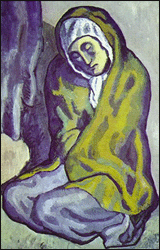
More than 19 million adults experience depression each year in the United States. Many of them will be unnecessarily incapacitated for the duration of their illness. Nearly twice as many women (12 percent) as men (7 percent) suffer from depression each year. Perhaps most concerning is the fatality rate from major depression. It is estimated that 15% of individuals with severe major depressive disorder die by suicide.
In the U.S. alone, depression costs more than $30 billion per year in direct and indirect costs. Major depression is the number one leading cause of disability in the United States and the entire world, according to a recent study by the World Health Organization, the World Bank, and Harvard University.
Depression is often an illness that may occur by itself, or may develop as a complication of heart attack, stroke, diabetes, cancer, or other chronic illness. Recent evidence even indicates that depression itself can be a risk factor for developing other diseases. It increases the risk of heart attack, for example. One recent study found that over a 13-year period, those with a history of major depression were four times as likely to suffer a heart attack compared to people without such a history. Despite this considerable interaction of depression with other illnesses, DEPRESSION IS TREATABLE.
Having a Crisis? Befriendes.org has a detailed website with listings of CRISIS centers and phone numbers throughout the US and World. Other places to look for help include the Boys Town National Crisis Hotline: 1-800-448-3000, (in English or Spanish. TTY line for hearing impaired: 1-800-448-1833). The National Alliance Mental Illness at 800-950-NAMI (6264) is another dedicated hotline. Finally, if you or somebody you know is suicidal, you can get help and information at the National Crisis Line at 1-888-SUICIDE.
NEUROBIOLOGY
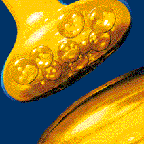
The basic cell of the brain and nervous system is called a neuron. Neurons talk to each other by releasing neurotransmitters. There are specific circuits of neurons in the brain that use specific neurotransmitters, and studies over the last fifty years have begun to identify which circuits and which transmitters are involved in depression. Dopamine, norepinephrine, and serotonin are some of the transmitters used in these “˜mood circuits.’ Antidepressant medications affect the amount and duration of these transmitters. Note that they don’t actually affect neurons directly: rather they allow your own natural transmitters to build up to higher levels.
Non-drug interventions usually work by having you “˜exercise’ those mood circuits in certain ways so that you jump-start your brain into adjusting those transmitter levels. Some therapies even cause your brain to create brand new circuits so that depressive thoughts don’t become so stifling. If the brains of depressed people who took antidepressants are compared with the brains of depressed people who had only psychotherapy, the MRI (brain scan) images are very similar, providing some evidence that there are multiple ways to cause the same changes in the brain to relieve depression.
Scientific studies have also found other biological mechanisms to be related to depression including: changes in the endocrine system (i.e., the system in which chemical messages are sent through the blood, such as the thyroid gland), genetics (e.g., one identical twin is much more likely to be become depressed if the other has depression), parieto-occipital oligodendroglial swelling (changes in the cells which protect neurons in part of the brain), left frontal cortical and subcortical hypoactivity (decreased activity in the part of the brain just above your left eye), and changes to the ventricles and basal ganglia (other structures of the brain).
Most depression is considered ‘psychiatric’ meaning that it occurs independently of other disease processes that may be at work in the body. However, sometimes certain diseases and drugs are responsible for the changes in the brain leading to depression. Usually these non-psychiatric types of depression have just one or two of the features of depression, for example, just slowed movement but all else is normal. If these medical problems are the cause, then if they are treated, the depression will go away. Even so, the depression can still be treated just like the “˜regular’ kind with certain antidepressants and non-drug therapies.
Diseases in any of the following organs may cause depression: kidneys, heart, lungs, thyroid gland, adrenal gland, parathyroid glands, pancreas Infections: pneumonia, mononucleosis, AIDS Inflammation: lupus, rhuematoid arthritis Neurologic: epilepsy, multiple sclerosis, Parkinson’s disease, stroke,brain trauma. In addition, many prescription drugs can cause depression such as: steroids, oral contraceptives, propranolol, reserpine, methyldopa Drugs of abuse: alcohol, marijuana, hallucinogens, and amphetamine withdrawal, to name only a few.
SIGNS & SYMPTOMS
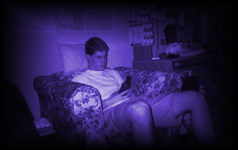
The mood of somebody experiencing a major depressive episode is commonly described as “depressed, sad, blue, hopeless, discourage, blah, or down in the dumps.” There are a myriad of other signs and symptoms of depression. In addition to a blue or depressed mood or loss of interest in activities, other symptoms of depression include: 1. An inability to concentrate 2. A loss of energy 3. A loss of interest or pleasure in ordinary activities (including sex) 4. A decreased (or increased) appetite that may lead to weight loss (or weight gain) 5. Changes in sleep (e.g., sleeping much more, waking up early, experiencing insomnia) 6. Feelings of excessive guilt, despair, and / or hopelessness 7. Difficulty remembering things 8. Recurrent thoughts of death or suicide 9. Irritability Signs of depression may include: a slowing down of movements, suicidal attempts, chronic aches and pains that won’t respond to treatment and the cause of which can’t be found, fatigue.
In addition to seeing a physician, there are a number or questionnaires that may be helpful in diagnosing depression. The Hamilton and Zung are two well known self-administered questionnaires that have been shown to fairly accurately determine if somebody has depression. There is no substitute for speaking with a doctor, however, if you believe you or a loved one is suffering from this disease.
The formal diagnostic criteria are described in the DSM-IV.
DIAGNOSIS
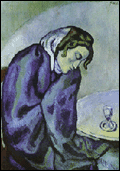
Depressed mood exists on a spectrum from saying good-bye to a friend to mourning the loss of a loved one to being overwhelmed by a traumatic event. Often depression exists without any obvious reason or trigger. Depression is not just a form of “˜extreme sadness,’ it is a disorder that affects the brain and the body, affecting the consciousness, thinking, and behavior in the mind, and the immune system and peripheral nervous system in the body. The word “˜disorder’ is included in the definition of ‘depressive disorder’ because it signifies that the person becomes unable to function in terms of personal and work responsibilities.
There are several disorders which share traits with depression, such as manic-depressive (bipolar) disorder, normal bereavement or grief (e.g., following the death or loss of a loved one), postpartum depression, seasonal affective disorder, and dysthymia.
The medical definition of depression is a sustained abnormality in a person’s mood or feelings of despair, hopelessness, and self-hatred. A depressive episode is defined as a period of time lasting at least two weeks in which a person feels depressed mood or an inability to experience any pleasure, accompanied by at least five of the following: changes in sleep, loss of interest, feelings of guilt, loss of energy, inability to concentrate, loss of appetite, slowing of the reflexes and movement, and thoughts of suicide. Unlike a passing sad mood, depression is called a disorder because it interferes with ones normal functioning in everyday life. The formal diagnostic criteria are described in the DSM-IV.
Depression can occur at any age, though the average onset is during the second decade of life. Different people can have very different courses of depression. Most commonly, people with untreated depression experience episodes of depression that come and go, increasing in frequency with age.
SELF-RATING SCALE
SELF-RATING SCALE The Zung questionnaire is a useful complement in the diagnosis of depression; it is in no way a substitute for an interview with a doctor.
TREATMENT
Depression can be treated in a number of ways. Click on the topic links for more details. Treatments vary according to both the cause of depression as well as its severity, though in general antidepressant medications combined with psychotherapy is considered the standard of care in the United States and has been found to be the most effective. Medications are used to adjust or correct neurochemical imbalances believed to cause depression. Psychotherapy and counseling aim to help people overcome negative thoughts and feelings and to help evaluate from where, and why, these detrimental feelings arise.
There are several classes of prescription antidepressants, the major ones being:selective serotonin reuptake inhibitors (SSRIs), tricyclics, and monoamine oxidase inhibitor (MAO-inhibitors). These names refer to the chemical structure and function of the drugs. There are also several new drugs which do not fit neatly into any of these classes, such as Remeron, Effexor, Serzone, and Wellbutrin (these are discussed in the “newer medication“ section).
None of the prescription antidepressants are believed to be addictive, but they (like all medications) have side effects. Today, doctors often start out with an SSRI or one of the newer medications because they often have the fewest and least serious side effects of all the common prescription medications. All antidepressant medications must be used for several weeks before one can expect to experience an improvement in mood and symptoms. SSRIs, MAO-inhibitors, and tricyclic antidepressants are all quite effective. In fact, medications from each of these three classes have been shown to be effective in up to 80% of those who take them as directed. Click on the links to learn more about each class of medication.
The most common medications used today are fluoxetine (Prozac), paroxetine (Paxil), and sertraline (Zoloft). These medications have effects on serotonin-containing neurons and are called selective serotonin reuptake inhibitors (SSROs). For most patients, and many children and adolescents with depression, the SSRIs are the first line choice of medication.
Developed in the 1950s, tricyclic antidepressants (TCAs) (based on their chemical 3-ringed structure) are another class of antidepressants commonly prescribed. Today, these medications are often used after an initial or second line treatment fails. Though certainly safer than the older MAO inhibitors, the tricyclic antidepressants also have a long list of potential side effects.
Some medications do not require a prescription. St. John’s Wort and other herbal remedies, for example, are chemicals that has been proven to work for some people with depression. Your physician can further discuss the role of herbal medications in the treatment of depression.
Finally, electric shock treatment, or more appropriately called electroconvulsive therapy (ECT), is a tried and true method of treating refractory depression. ECT is accomplished by passing an 80 volt electric shock through electrodes on the patient’s head which results in an electrical current through the brain. Despite the barbaric sounding nature of this procedure, the shock is not felt by the patient, who is under general anesthesia. This technique is probably as effective – if not more so – than many oral medications. It is unclear why ECT is effective; it is believed to work by “rebooting” the depression centers of the brain. Believe it or not, ECT is quite safe and should be seriously considered in those with severe depression resistant to the techniques discussed above or those unable to adequately try other treatments (e.g., severely suicidal patients). It is usually administered three times a week for two weeks.
I have a depressed friend now, how can I help?
The National Institute of Mental Health provides some information here. One can get a referral to a qualified counselor by calling or clicking to 1-800-therapist. If you or somebody you know is suicidal, you can get immediate help and information at the National Crisis Line at 1- 888-SUICIDE. And finally, if you feel somebody is in immediate danger of hurting themselves or somebody else, you can always call the police for help (911).
NEWER MEDICATIONS
There are new antidepressants being discovered and developed regularly. The most common of these, not specifically in the SSRI class, include Effexor (venlafaxine), Serzone (nefazodone), Remeron (mirtazapine), and Wellbutrin (bupropion).
Effexor (venlafaxine) inhibits the reuptake of both serotonin and norepinephrine, another neurotransmitter suspected as contributing to depression. suspected as contributing to
Serzone (nefazodone) is a phenylpiperazine medication. It is given twice a day and is helpful for people with anxiety as well.
Remeron (mirtazapine) is a novel class of medication (tetracyclic) designed specifically for the treatment of depression. A common side effect of this medication is weight gain. This side effect is unwanted in depressed folk with weight problems but desired in people who have lost significant weight due to their depression.
Wellbutrin (bupropion) is an aminoketone medication. In addition to its usefulness in depression, it has been found to be effective in helping people quit smoking (Zyban is the same medication as Wellbutrin).
Click here for more information about specific drugs and side effects.
SSRI
Medications of the selective serotonin reuptake inhibitor (SSRI) class have been tremendously successful and have impacted how we view both mental illness and our society as a whole. The first, and most well known, medication in this class is Prozac (fluoxetine). Prozac and the other SSRIs (e.g., Zoloft, Paxil, Celexa) have revolutionized our acceptance of depression as a disease. The incredible success and widespread use of these medications have made us take a closer look at ourselves, and how we, as a species, have adapted to our modern society.
The SSRIs function much the way as do other antidepressants in that they change the chemical concentration of neurotransmitters within the brain. One of the most important aspects of these medications are their ability to selectively effect serotonin while leaving other brain chemicals alone. This allows an effect to occur while minimizing the more serious side effects seen with other medications that are not selective in their effect. The chemical structure of Prozac (fluoxetine) is below.
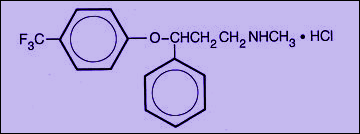
SSRIs help not only people with depression but also those with obssessive-compulsive disorder, bulimia, anxiety, and panic disorder. SSRIs may cause a decrease in libido and an inability to attain orgasm in men or women. SSRIs may also disrupt sleep, causing daytime fatigue. Headaches, sweating, nausea, slight weight loss, diarrhea, and tremor are some side effects that may occur in certain patients. SSRIs cause increased sensitivity to the sun in certain people as well. SSRIs work by preventing neurons (nerve cells) from pulling in the serotonin that is floating in the space between neurons. This allows more serotonin to build up and improves communication between the neurons.
Over 70% of surveyed depressed and non-depressed people report that a good sex life is very important to them. Both depression itself and some of the medications used to treat it may cause problems in sexual function. People may experience decreased desire to have sex, erection impairment, ejaculation impairment, and orgasm delay (in men or women). Psychiatrists can help by trying non-medication therapies in conjunction, switching medications, or adjusting dose or scheduling (drug holiday) of a medication.
TCA
Tricyclic antidepressants are an older class of antidepressants, but which work quite well. They are named after their chemical structure (having three rings – the chemical structure of amitriptyline is shown below). The most common tricyclic antidepressants used today are imipramine and amitriptyline, as well as nortriptyline, doxepin and desipramine. This class of antidepressants work very well for the treatment of depression. Concern about these medications, however, is a result of their extensive list of side effects and drug interactions, and also because of the ability of these medications to kill when taken in excess (i.e., a depressed and suicidal patient has a fairly good chance of dying if he or she takes an overdose of a tricyclic antidepressant).
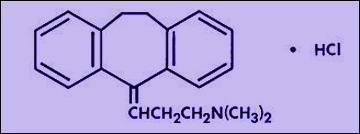
Fairly common side effects include dry mouth, blurred vision, drowsiness, dizziness, and tremors (to name a few). Rare side effects include liver inflammation, heart attack, stroke, and seizures. Much like the action of other classes of antidepressants, the tricyclic antidepressants work by preventing the uptake of norepinephrine and serotonin. Therefore the concentration of these neurotransmitters build up and improve communication between certain neurons. Like all antidepressants, the tricyclics should be tapered off only under physician care.
For all of the antidepressants, you should discuss all other medications you are taking with your physician to ensure there are no dangerous interactions.
Click here for more information about specific drugs and side effects.
MAO-INHIBITOR
MAO-Inhibitors (Monoamine oxidase inhibitors) MAO-inhibitors work by blocking an enzyme called monoamine oxidase. Some of the messenger molecules (neurotransmitters) of the brain, such as serotonin and norepinephrine, are monoamines, and if you turn off this enzyme, the result is more of these molecules accumulate. The result is therefore essentially the same effect as using an SSRI. More neurotransmitters build up between neurons and as a result, the neurons increase in activity. The two most common MAO-Inhibitors used today are Parnate (tranylcypromine sulfate) and Nardil (phenelzine sulfate). The chemical structure of Nardil is shown.
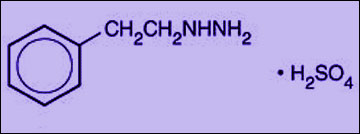
MAO inhibitors work more rapidly than the tricyclics. The problem with MAO-Inhibitors is due to the inadvertent effect on another chemical called tyramine. Monoamine oxidase enzyme usually also breaks down tyramine. If an MAO-inhibitor is used, tyramine is not broken down as it usually is, and levels of this chemical build up. Tyramine causes elevation of blood pressure, so an increase in this chemical leads to an increase in blood pressure which could lead to stroke, heart attack, and other nasty side effects. Because of this, people using MAO-inhibitors must avoid foods that are high in tyramine, such as alcohol, legumes (e.g., fava and soy beans), cheese, fish, ginseng, meat, sauerkraut, shrimp paste, soups, and yeast extracts (baking yeast is OK in small quantities).
The long list of side effects of MAO-inhibitors may related and unrelated to high blood pressure include dizziness, fainting, headache, tremors, muscle twitching, confusion, memory impairment, anxiety, agitation, insomnia, weakness, drowsiness, chills, blurred vision, and heart palpitations. If one stops an MAO-Inhibitor, the dose should be very slowly tapered downward under the care of a physician.
Click here for more information about specific drugs and side effects.
NON-PRESCRIPTION
Herbal remedies to treat depression include St. John’s wort, SAMe, ginkgo biloba, and caffeine. With the exception of St. Johns Wort, there is insufficient clincial data to support the use of these treatments.
St. John’s Wort (hypericum)
St. John’s Wort (wort is an old British word for “˜plant’) has been studied the most extensively and been shown to have the strongest effect up to now.

A 1996 report by Audie Murphy and colleagues published in the British Medical Journal found that over 23 studies of St. John’s wort show that it is over twice as effective for improving depression than simply taking a fake placebo pill. For those whom it helped, the improvement was similar to that seen by people taking standard antidepressant medications.
St. John’s wort is used much more in European countries such as Germany, but physicians in the United States are starting to use it more and more. It works as a weak MAO-inhibitor and as an SSRI. Like traditional antidepressant medications, St. John’s wort is a physiological active chemical and can cause side effects. St. John’s wort may cause upset stomach, dry mouth, fatigue, dizziness, rashes, and itching, in addition to possible food interactions as seen with other MAO-inhibitors. Do not take St. John’s wort if you are already taking other antidepressants, and do not take other antidepressants if you are already taking St. John’s wort. Do not use the herb if you are pregnant or nursing, or planning to become pregnant while taking it. Consult your doctor with any questions. Also, a few adverse drug interactions have been recently identified between St. John’s Wort (hypericum) and two drugs: indinavir, a protease inhibitor used to treat HIV and cyclosporine, a drug used to reduce the risk of organ transplant rejection. Potentially dangerous changes in drug effects can occur when medications such as cyclosporine (Neoral, Sandimmune), digoxin (Lanoxin, Lanoxicaps) and warfarin (Coumadin) are taken with hypericum extracts. Hypericum extracts can decrease the blood levels of antiretroviral medications that are used in the treatment of HIV infection, thus making these drugs less effective. Recent data show that the plasma levels of the protease inhibitor indinavir (Crixivan) were reduced by more than 50% by hypericum (St. John?s wort) products.
See the following article for me details on the efficacy of St. John’s Wort: Linde, K. et al. “St. John’s Wort for Depression: A Meta-Analysis of Randomized Clinical Trials,” British Medical Journal (1996) 313:253.
Other Remedies
SAMe (or S-adenosyl-L-methionine) is a chemical naturally found in all the cells of our body, and has been found to be as effective as antidepressant medications when used in proper doses. It works much faster and has less side effects. It is thought that it works by increasing the production of neurotransmitters such as serotonin and norepinephrine. While it has been found to be safe for the use of pregnant, breastfeeding, or women desiring to become pregnant, make sure to check with your doctor when starting a course of medications (such as SAMe) to treat depression.
Ginkgo improves blood flow through the brain, and has helped many people regain mental acuity and improve mood. However, it also has side effects including diarrhea and irritability. Some people believe that ginko stimulates the brain into overdrive, and the long term effect of this is dangerous (e.g., imagine running your car in 1st gear all the time: it may have better acceleration at the start, but it will burn out the clutch sooner). People taking aspirin or other blood thinners should avoid taking ginkgo.
Caffeine not only wakes you up, it can also improve mood, decrease pain, and cause weight loss in some patients. Side effects include agitation, insomnia and irritability, and like all drugs, should be followed by a doctor if you are trying to use it to deal with depressive symptoms.
THERAPY / COUNSELING
There are many types of mental health professionals, including psychologists, psychiatrists, social workers, and counselors. All may work as therapists, though different professions emphasize different aspects of mental health services. The words “therapist” and “counselor” do not have legal meanings. In most states anyone can use these terms. In addition to clinical psychologists there are many fine counselors and therapists who have degrees in counseling, clinical social work, and related mental health fields. Check for credentials and memberships in professional organizations. Many specialize in certain areas, such as family therapy, sexual problems, or eating disorders. If you plan to see a mental health professional, take these steps first:
- get a referral from someone you trust
- interview the therapist
- ask about fees, insurance, and the plan for treatment
The National Mental Health Association at (800) 969-6642 can help answer questions. If you are not satisfied with your first mental health professional, do not give up on counseling or therapy. Try someone else.
Who can counsel me?
Psychiatrists are medical doctors who have earned the M.D. or D.O. degree and have had both the full medical training in human diseases and completed a three year (or longer) psychiatric residency. They usually work by providing medication and psychotherapy.
Psychologists have earned a Ph.D. in clinical psychology. They cannot prescribe medications, but they are experienced in psychological theory and interventions, such as cognitive behavioral and psychotherapy discussed below.
Social workers are people with a degree called the master’s in social work. They often work with doctors to coordinate the family education and support for a patient with a medical illness. They are trained to help people work out difficult feelings and situations, and can provide resources in the community.
School and work counselors are often psychologists or social workers by training, however it is up to you to determine the training of the particular counselor who you are interested in speaking with.
People may also find it helpful to speak with people who are not trained in psychology per se, such as members of the clergy, artists, teachers, friends and family members. While they may not be able to treat the depression, it is better to discuss your feelings with somebody rather than nobody at all. Clergy and teachers, in particular, should be aware of counseling resources available for you.
Research has shown that therapies based on discussions with a mental health provider can be just as effective in improving depression as medications in many people. Using both counseling and medication has been shown to be most effective in the treatment of depression, though many people with mild to moderate depression may do well with counseling alone. Commonly used forms of psychotherapy are cognitive, behavioral, and interpersonal therapies. Cognitive therapies challenge the negative thought patterns that accompany depressed moods and teach techniques to think more positively. Behavior therapies concentrate on changing patterns of behavior that can help manage your symptoms better. Interpersonal therapies help you examine your relationships with others, and how they impact on the mood disorder.
Counseling & Therapy Techniques
Cognitive & Behavioral Theory: Certain forms of depression are best understood from a psychological standpoint. The persistent negative thinking and feelings of depression can be understood as the result of experiences that have profoundly affected the mind’s development, such as childhood traumas or relationships with parents. Behavioral psychology proposes one form of depression may be due to “˜learned helplessness’ which is when a person or animal is punished no matter what they do. You can imagine that if a child were punished for no apparent reason they would conclude that their every action was deemed wrong and begin to doubt and hate themselves.
Cognitive behavioral therapy attempts to identify, confront, and change patterns of negative thinking. Such patterns are often so entrenched in the minds of depressed people they may not realize there are even other ways of thinking. Negative patterns may include: jumping to conclusions, over-generalizations (“I failed at this, I’ll fail at everything”), mental filtering (“she liked my gift, but I ruined our relationship because I left the price sticker on it”), discounting the positive (“he doesn’t know what he’s talking about, I’m not really that good”), all-or-nothing (“Either I get an A+ or I am worthless”), and personalizing blame (“it’s my fault she got lost on her way here even though I wasn’t the one who gave her directions”).
Dr. David Burns, the founder of cognitive behavioral therapy, found that there are some strategies that may help you escape such negative thinking. Six strategies include: (1) What would you say to a friend who was in your place? (2) Examine the evidence: is the situation truly as you describe it? Do you really have no social network, or have you just not called some of your friends or have they been really busy? (3) Experiment: perhaps you feel you are selfish, but contemplate unselfish acts you do, such as helping friends or doing community service. (4) Look for partial successes: instead of seeing things as partial failures, appreciate the successful aspects of what you have achieved. (5) Define your terms. If you call yourself mean, selfish, or blind, stop right away and force yourself to define what you mean by that. How are you “˜mean’? Does it correspond to how the dictionary defines it? (6) Solve the problem. A previous resident of your house still has the keys and comes in at all times? Change the locks.
Seven steps to more positive thinking include: (1) Write your feelings out with pen and paper. (2) Identify exactly what is bothering you. (3) Identify what are your negative emotions. (4) Identify negative thoughts that accompany those emotions. (5) Identify how you have distorted things and substitute rational responses. (6) Reconsider the conclusions you have jumped to. (7) Plan corrective action.
More information on cognitive behavioral therapy can be found from the NIH Depression Awareness, Recognition, and Treatment (D/ART) Program and The Feeling Good Handbook by David D. Burns, MD More detailed information about cognitive behavioral therapy can be found here.
Psychotherapy: Psychotherapy involves a psychological approach to addressing depression. Discussions with a mental health care provider explore the possible causes and effects of depression in terms of family relationships, childhood, dreams, work, social situation, and other medical or psychological problems. Therapists may employ role-playing, hypnosis, behavioral, art, dance, music, movement, animals, exercise, diet, meditation or whatever may be appropriate to help people learn about and deal with depression.
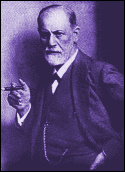
The word “˜psychotherapy’ refers to a broad range of psychological intervention that may include everything from cognitive behavioral therapy, discussed earlier, to traditional psychoanalysis. Psychoanalysis is based on the tradition established by Freud (pictured) in which patients use free association and dream discussion to explore self-destructive thinking, which the therapist then comments upon and gives advice. While psychoanalysis remains controversial, psychodynamic therapy involves the therapist discussing ideas actively with the patient. It may feel like a normal conversation to the patient, but in fact the therapist uses his or her extensive knowledge of psychological processes to help the patient understand and deal with depression. Therapists can always tailor therapy to the needs and ideas of a patient: religious texts, literature or poetry might be helpful for one patient, while walking through the woods or making a sculpture might be more helpful for another. In all these cases, a skilled therapist can use these interventions to help a patient learn more about who they are and how they can help herself.
Therapists may integrate the theories and practices of certain psychiatrists and teachers. Some important psychiatrists who have introduced helpful therapeutic thinking include: Jung, Erikson, and Maslow. Psychotherapy has been shown to be quite effective. One recent study using PET scanners (which record overall brain metabolism) showed that brain scans of depressed people who have been treated with medications are comparable with those of depressed people who have undergone intensive psychotherapy for a similar amount of time. In other words, psychotherapy is able to cause changes in the brain in a similar fashion as if the person had taken medication.
MISCELLANEOUS
There are a number of other treatments for depression that have not yet been discussed. Though we don’t go into detail on this options, suffice it to say that some are just as effective in the successful treatment of depression as are medication and counseling. The more common and beneficial interventions include mind/body techniques including meditation, relaxation response, biofeedback, yoga, and tai chi. Regular aerobic exercise is also thought to help in the prevention and treatment of mild depression.
Many naturopaths and holistic practitioners use less conventional treatments including aromatherapy, homeopathy, acupuncture, reflexology, and others. Western medicine does not accept these treatments as adequate since there are limited, if any, clinical studies that show a benefit over placebo. Given the significant potential for serious illness and even death (e.g., suicide) resulting from unsuccessfully treated depression, we recommend these treatments be used only in conjunction with medication and traditional counseling until such time that adequate studies show a clinical benefit.
At the other end of the spectrum is electroconvulsive therapy (ECT). ECT has been shown in multiple studies to be quite effective in the treatment of resistant depression, or in patients unable to tolerate standard antidepressants. ECT is done by passing an 80 volt electric shock through electrodes on the patient’s head which resale in an electrical current throughout the brain. Despite the barbaric sounding nature of this procedure, the shock is not felt by the patient, who is under general anesthesia. This technique is probably as effective – if not more so – than many oral medications. It is unclear why ECT is effective; it is believed to work by essentially “rebooting” the depression centers of the brain. Believe it or not, ECT is quite safe and should be seriously considered in those with severe depression resistant to the techniques discussed above or those unable to adequately try other treatments (e.g., severely suicidal patients). It is usually administered three times a week for two weeks.
RESOURCES
Depression is a complex disease that affects nearly one in every ten people. It is usually described as a pervasive feeling of a depressed or blue mood lasting more than two weeks, and associated with other common symptoms such as insomnia, change in appetite, feelings of hopelessness or despair, feelings of guilt, and/or a loss of interest in activities. Untreated depression can lead to suicide and other disease. Luckily, depression is easily treated.
The first place to turn if you or somebody you care about might have depression, is your own family doctor.
For further reading on depression, we suggest the following books which explore the experiences of depression as well as the treatments.
Listening to Prozac by Peter D. Kramer
Prozac Nation: Young and Depressed in America: A Memoir by Elizabeth Wurtzel
The Adolescent Depression Workbook by Stuart MD Copans, Mary Ellen MA MS Copeland
Having a Crisis?
Befriendes.org has a detailed website with listings of CRISIS centers and phone numbers throughout the US and World. Other places to look for help include the Boys Town National Crisis Hotline: 1-800-448-3000, (in English or Spanish. TTY line for hearing impaired: 1-800-448-1833). The National Alliance Mental Illness at 800-950-NAMI (6264) is another dedicated hotline. Finally, if you or somebody you know is suicidal, you can get help and information at the National Crisis Line at 1-888-SUICIDE.
There are also a number of good websites and other sources with regards to depression. Our favorites include the Wings Of Madness Depression Guide, the National Institute of Mental Health and Befrienders.Org. Other helpful sites include:
The American Psychological Association Comprehensive website including general information and news about psychology. www.apa.org
National Institute of Mental Health The national organization devoted to treatment and research in mental health. www.nimh.nih.gov
National Alliance for the Mentally Ill Grass roots and self-help. www.nami.org
American Academy of Child and Adolescent Psychiatry Information about childhood disorders and treatment. www.aacap.org
The American Psychiatry Association www.psych.org.